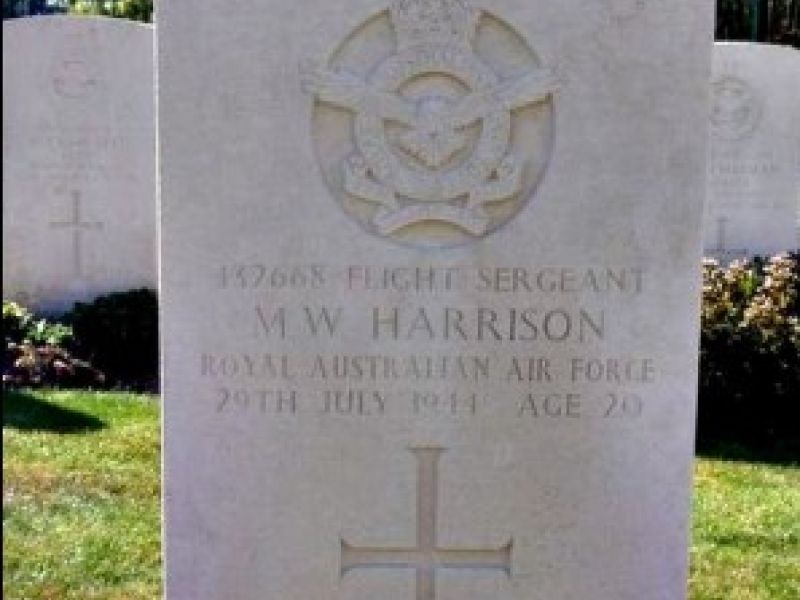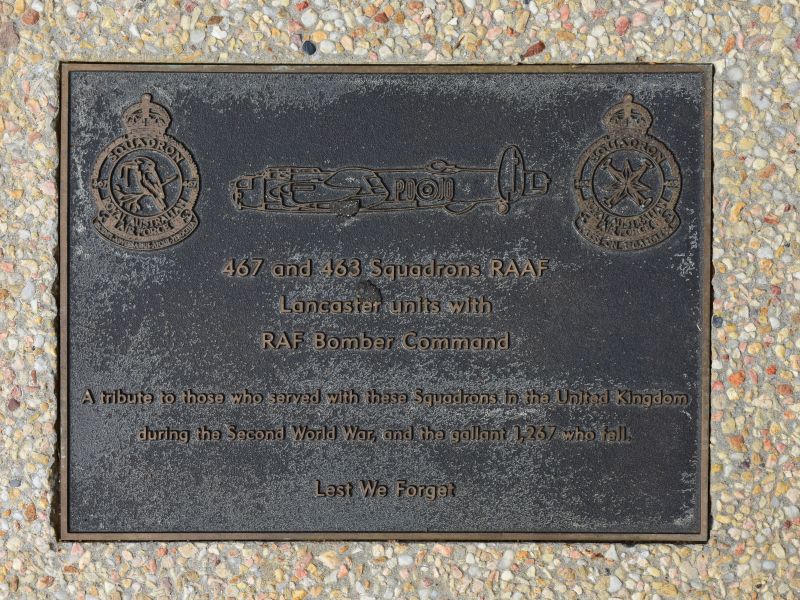Flight Sergeant Mervyn Walter Harrison, No. 463 Squadron, RAAF
Mervyn Harrison was born on 24 November 1923, the son of Carlyle and Ivy Harrison of the Sydney suburb of Tempe.
He attended Tempe public school, Erskinneville special school, and then Canterbury high school, gaining his intermediate certificate before going on to studies accountancy and business management while he worked for W.D. Wood as clerk and acting manager of a sawmill.
Harrison applied for enlistment as an airman on 11 January 1943, and three days later joined the Royal Australian Air Force at the age of 19.
After initial training at Bradfield Park, and then further training at Narrandera, Evans Head, and Ascotvale, in late September he bid his family goodbye while he was on pre-embarkation leave before departing for England.
As part of the Empire Air Training Scheme, Harrison was one of almost 27,000 RAAF pilots, navigators, wireless operators, gunners, and engineers who joined Royal Air Force and Royal Australian Air Force squadrons in Britain throughout the course of the war.
Following further training in England, Harrison joined an operational training unit as an air gunner. In early June 1944, he joined No. 463 Squadron, which had been formed from C Flight of 467 Squadron at Waddington in the United Kingdom in November 1943. 463 Squadron was equipped with Lancaster heavy bombers and formed part of the Royal Air Force Bomber Command. Its first commanding officer was Wing Commander Rollo Kingsford-Smith, the nephew of the famous Australian aviator Sir Charles Kingsford-Smith.
The squadron began operations the night after its formation with an attack on Berlin. Night raids on Germany became a focus of the squadron's activities.
In just under a year and a half of operations, 463 Squadron flew over 2,505 sorties, dropped around 11,500 tons of bombs, and its gunners destroyed six enemy aircraft. As was the case throughout Bomber Command, these results came at considerable cost. The squadron lost 546 aircrew, 225 of whom were Australian, sustaining the highest loss rate of any of the Australian bomber squadrons.
On the night of 28 July 1944, Harrison was a crewmember in Lancaster ME-615 JO-V that took off from an airfield near Waddington, on a night mission tasked with bombing targets in the German city of Stuttgart.
The aircraft never returned from its mission, and the cause of loss has never been established.
All crewmembers aboard the Lancaster were officially presumed dead:
Flight Sergeant Frank Fischer,
Flight Sergeant Bernard Reece,
Sergeant Ernest Starling,
Warrant Officer Norman Gelder,
Flight Lieutenant Brian Moorhead,
Flight Officer John Wilkinson,
and Flight Sergeant Mervyn Walter Harrison, who was 20 years old.
Today, they are commemorated at Choloy War Cemetery in France.
- AWM Honour Roll https://www.awm.gov.au/collection/R1721635

 Australian War Memorial
Australian War Memorial